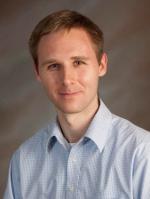
Professor of Physical Chemistry and Biophysics
1920 Professor of Physical Chemistry
Our research
We study the physical and chemical aspects of the behaviour of biopolymers and other soft systems. Much of our work has been focused on the physical aspects underlying the self-assembly of protein molecules. Self-organisation is the driving force generating complex matter in nature, and the process by which the machinery providing functionality in living systems is assembled. The goal of our research is to understand the physical and chemical factors which control the structures and dynamics of biomolecular assemblies, and the connections between the nanoscale characteristics of the component molecules and the physical properties of large-scale assemblies and their behaviour on a mesoscopic to macroscopic scale. The techniques used in our laboratory include biosensors, optical lithography, microfluidic devices and scanning probe microscopy and spectroscopy. We work both with natural and synthetic polymers and our interests range from fundamental chemical physics to technological applications in material science and molecular medicine.
Watch Professor Knowles discuss his research
Take a tour of the Sir Rodney Sweetnam laboratory
Publications
- ‹ previous
- Page 55

